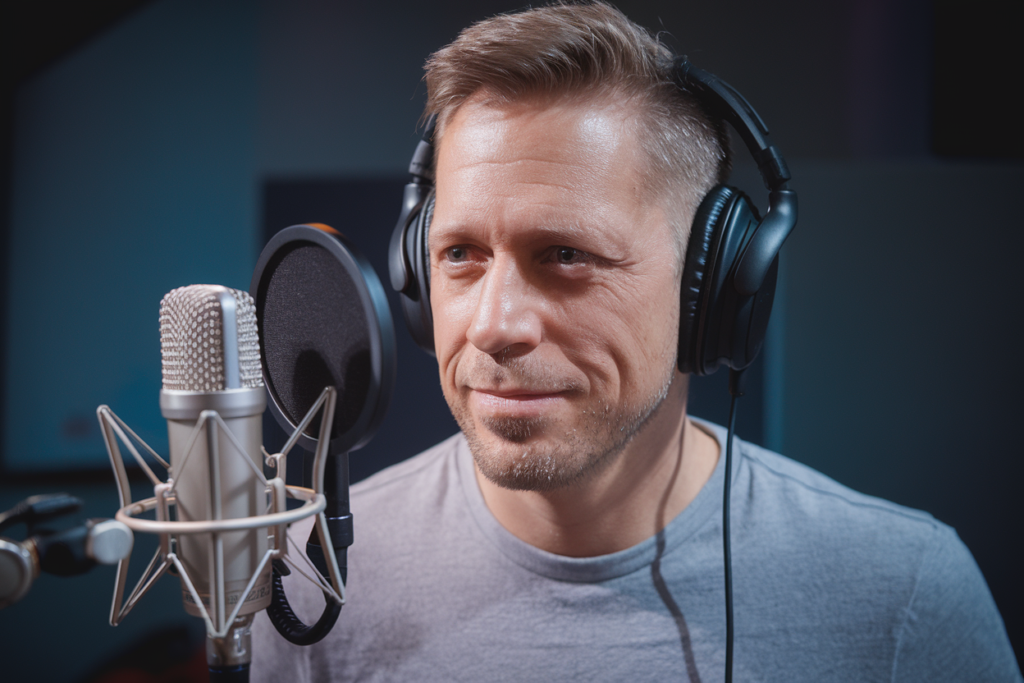Key Takeaways
- Distinct Dialects: Berlin German (“Berlinerisch”) features unique slang and pronunciation that differentiate it from the standardized High German, reflecting the city’s vibrant culture and history.
- Cultural Context: Understanding the evolution of both dialects reveals their connection to Berlin’s diverse population and broader German culture, enriching your appreciation of the language.
- Phonetic Variations: Key phonetic differences, such as consonant softening in Berlinerisch, contribute to its casual ambiance, making it essential for voice artists to master these nuances for authentic performances.
- Vocabulary Differences: Unique terms and phrases in Berlin German (e.g., “Kiez,” “Bock haben”) enhance communication with locals and add authenticity to creative projects involving regional contexts.
- Practical Applications: Learning both dialects is crucial for engaging effectively with audiences—Berlin German for informal settings and High German for formal communication across Germany, Austria, and Switzerland.
Ever wondered why Berlin German sounds so different from High German? If you’re planning a trip to Germany or just curious about the language, understanding these differences can really enhance your experience.
Berlin German, with its unique slang and pronunciation, reflects the vibrant culture of one of Europe’s most dynamic cities. It’s not just a dialect; it’s a living expression of history and identity that sets itself apart from the standard High German you might learn in textbooks. So, whether you’re trying to fit in with locals or simply want to appreciate the richness of the language, diving into this comparison will give you valuable insights into both forms of German.
Overview of Berlin German and High German
Berlin German, known as “Berlinerisch,” features distinct slang and pronunciation that reflect the city’s dynamic culture. This variant isn’t merely a dialect; it represents a unique history and identity shaped by Berlin’s diverse population. You’ll notice that certain words and phrases differ significantly from High German, which is the standardized form taught in schools.
High German serves as the foundation for formal communication across Germany, Austria, and Switzerland. It emphasizes clarity, grammatical correctness, and adherence to linguistic rules. In contrast, Berlin German thrives in casual settings—its expressive intonations often convey local nuances that standard forms may lack.
Understanding these differences enhances your appreciation of both languages. For instance, if you’re a voice artist looking to connect with an audience in Berlin, grasping these subtleties can make your project resonate more deeply with listeners. The vibrant essence of Berlin’s streets comes alive through its language; embracing this can elevate your performance or presentation.
Ultimately, whether you’re navigating daily life or engaging in creative projects like voiceovers, recognizing the distinction between Berlin German and High German enriches your experience within this cultural landscape.
Historical Context
Berlin German and High German exhibit distinct historical paths that shaped their current forms. Understanding this context reveals the richness of language in Berlin and its connection to broader German culture.
Evolution of Berlin German
Berlin German, or “Berlinerisch,” evolved through centuries of influence from various groups, including immigrants and local communities. As a melting pot, Berlin attracted individuals from different regions, each contributing unique linguistic traits. This blend resulted in a vibrant dialect infused with slang, idioms, and pronunciations that reflect the city’s dynamic social fabric. For instance, terms like “icke” (I) and “jemand” (someone) showcase how colloquial expressions can diverge significantly from standard usage. The evolution continues today, with new phrases emerging as cultural trends shift.
Origins of High German
High German traces its roots back to the early stages of the Germanic languages spoken around the 6th century. It gained prominence through literary works and formal education systems across Germany, Austria, and Switzerland. The codification of High German in grammar books helped establish it as a standard for communication. Its focus on grammatical accuracy ensures clarity in official contexts—ideal for settings requiring professionalism or precise information delivery. Knowing this history is especially beneficial for voice actors aiming to master pronunciation nuances while delivering scripts that resonate with audiences familiar with both dialects.
Understanding these historical elements provides valuable insights into the linguistic landscape you’re navigating—whether you’re immersing yourself in everyday conversations or exploring creative projects that utilize distinct forms like Berlinerisch or High German.
Linguistic Features
Berlin German, or “Berlinerisch,” stands out with its distinct linguistic features that reflect the city’s dynamic culture. Understanding these elements enhances your ability to engage with the local community and appreciate the nuances of both dialects.
Phonetic Differences
Phonetic traits set Berlin German apart from High German significantly. You’ll notice variations in pronunciation, such as the softening of consonants and a more relaxed intonation. For instance, in Berlinerisch, “d” often becomes “t,” making “das” sound like “tas.” This phonetic shift contributes to a casual ambiance, ideal for everyday conversations. If you’re a voice artist aiming to capture authentic Berlin character in your projects, mastering these phonetic differences can elevate your performance and connect better with local audiences.
Vocabulary Variations
Vocabulary also varies considerably between Berlin German and High German. Certain words used in Berlin may not directly translate into standard forms. Common phrases like “Kiez” (neighborhood) or “Bock haben” (to feel like it) showcase this divergence. These unique terms infuse conversations with local flavor and identity, enriching communication. As a voice actor working on projects involving regional contexts, incorporating such vocabulary can add depth and authenticity to your voiceovers, resonating more effectively with listeners familiar with the dialect.
Understanding these linguistic features not only strengthens your grasp of both languages but also enhances your adaptability as a voice over talent in various settings—be it commercial work or creative storytelling.
Cultural Significance
Berlin German, or Berlinerisch, carries a rich cultural significance that extends beyond mere communication. You’ll find it deeply intertwined with the city’s identity, reflecting its history and diversity. This dialect embodies the vibrancy of Berlin’s neighborhoods, where unique slang and expressions capture everyday life.
Influence of Berlin German in Popular Culture
Berlin German prominently influences music, film, and art scenes globally. Artists often incorporate local dialects into their work to resonate with audiences on a personal level. Movies set in Berlin frequently use Berlinerisch to create authenticity and connect viewers to the city’s atmosphere. Musicians also embrace this dialect, using distinct phrases that evoke feelings tied to specific places or experiences within the city. If you’re a voice artist looking to engage listeners authentically, understanding these cultural nuances can enhance your performances.
High German in Institutional Settings
High German serves as the lingua franca for formal communication across Germany, Austria, and Switzerland. Institutions like schools and government offices rely on this standardized form for clarity and consistency. While it dominates official contexts such as news broadcasts or educational materials, it lacks some of the local flavor found in regional dialects like Berlinerisch. For voice actors working in institutional settings or formal projects, mastering High German ensures precise pronunciation and grammatical accuracy—essentials for delivering clear messages while maintaining professionalism.
Recognizing how both forms interact enriches your understanding of language’s role within culture—an invaluable asset whether you’re engaging with local communities or performing creative works that reflect authentic experiences.
Practical Implications
Understanding the practical implications of Berlin German compared to High German enhances your communication skills, especially if you’re involved in voice acting or creative projects. Each dialect brings distinct characteristics that can impact how you engage with audiences.
Learning Berlin German
Learning Berlin German immerses you in the local culture and everyday conversations. You may notice that familiarizing yourself with terms like “Kiez” (neighborhood) or phrases like “Bock haben” (to feel like it) adds authenticity to your work, whether you’re a voice artist or simply interacting with locals. The relaxed phonetics also offer a unique flavor; for instance, pronouncing “das” as “tas” can make your speech sound more relatable and genuine to residents. This understanding not only benefits your linguistic skills but also enriches your performances by allowing you to connect on a deeper level with your audience.
Understanding High German for Communication
High German remains essential for formal contexts and ensuring clear communication across diverse audiences. Knowing this standardized form is crucial if you’re targeting broader demographics in Germany, Austria, or Switzerland. It allows you to maintain professionalism while still being aware of regional nuances. As a voice talent, mastering High German equips you with the versatility needed for various projects—whether it’s narrating educational content or delivering corporate presentations where clarity is paramount.
By recognizing the differences and applications of both dialects, you enhance not just your language capabilities but also elevate the quality of your performances in any setting.
Conclusion
Understanding the nuances between Berlin German and High German opens up a richer connection to the vibrant culture of Berlin. You’ll find that Berlinerisch reflects the city’s unique identity, filled with local slang and expressions that bring conversations to life.
By recognizing these differences, you can enhance your communication skills whether you’re engaging in casual chats or navigating formal settings. Embracing both dialects allows for a more authentic experience, making your interactions resonate deeply with locals. Whether you’re an aspiring voice artist or simply looking to connect on a personal level, mastering these linguistic traits will elevate your journey through this dynamic city.
Frequently Asked Questions
What is the difference between Berlin German and High German?
Berlin German, or “Berlinerisch,” is a dialect characterized by unique slang and pronunciation that reflects the city’s culture. High German is a standardized form used for formal communication across Germany, Austria, and Switzerland. While High German emphasizes clarity and correctness, Berlin German thrives in casual contexts with its distinct vocabulary and phonetic features.
How did Berlin German evolve historically?
Berlin German evolved through centuries of influence from various immigrant groups and local communities in Berlin. This rich history shaped its unique slang, idioms, and pronunciation, setting it apart from standardized High German which has roots in early Germanic languages focused on literature and education.
What are some key linguistic features of Berlin German?
Notable features of Berlin German include softening consonants and relaxed intonation. For example, “das” is pronounced as “tas.” Additionally, unique terms like “Kiez” (neighborhood) and “Bock haben” (to feel like it) showcase local expressions that differ significantly from standard usage.
Why is understanding both dialects important?
Understanding both Berlin German and High German enhances communication skills for travelers, language enthusiasts, or voice artists. Familiarity with each dialect allows individuals to engage authentically with locals in everyday conversations while ensuring professionalism in formal settings.
How does Berlin German influence culture?
Berlin German deeply connects to the city’s identity by influencing music, film, and art. Artists often use local expressions to create authenticity that resonates with audiences. In contrast, High German provides clarity in institutional contexts but lacks the local flavor found in dialects like Berlinerisch.







